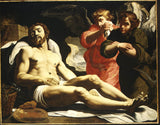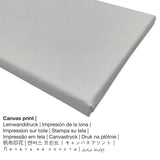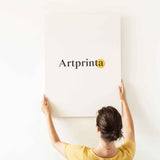Abraham Janssen van Nuyssen, 1610 - The Dead Christ in the Tomb with Two Angels - fine art print
Tax included. Shipping calculated at checkout.
Article summary
The classic art artpiece The Dead Christ in the Tomb with Two Angels was created by the artist Abraham Janssen van Nuyssen in 1610. The 410 year-old version of the work of art measures the size: 45 3/8 x 58 in (115,3 x 147,3 cm) and was produced with oil on canvas. This work of art can be viewed in in the The Metropolitan Museum of Art's art collection, which is one of the world's largest and finest art museums, which includes more than two million works of art spanning five thousand years of world culture, from prehistory to the present and from every part of the globe.. This artpiece, which belongs to the public domain is being supplied with courtesy of The Metropolitan Museum of Art, New York, Gift of James Belden, in memory of Evelyn Berry Belden, 1971. Creditline of the artwork: Gift of James Belden, in memory of Evelyn Berry Belden, 1971. Furthermore, alignment of the digital reproduction is landscape with a ratio of 4 : 3, which implies that the length is 33% longer than the width.
Choose your favorite product material option
In the product dropdown selection you can choose the size and material of your choice. You can choose among the following product customization options:
- Canvas print: A UV printed canvas stretched on a wood stretcher frame. Besides, printed canvas creates a attractive, pleasing appearance. A canvas print has the great advantage of being relatively low in weight, meaning that it is easy to hang your Canvas print without additional wall-mounts. That is why, a canvas print is suitable for all types of walls.
- Metal (aluminium dibond print): An Aluminium Dibond print is a material with an impressive depth, creating a modern look with a surface , which is non-reflective. A direct Aluminium Dibond Print is the perfect introduction to art replicas on aluminum. For the Direct Print On Aluminum Dibond, we print the chosen artpiece onto the aluminium white-primed surface. The bright and white components of the artwork shimmer with a silky gloss but without the glare. The colors are bright and vivid, the details are crisp, and you can truly perceive a matte appearance of the print. The direct print on Aluminum Dibond is the most popular entry-level product and is an extremely sophisticated way to showcase art prints, since it draws focus on the whole artwork.
- Poster (canvas material): A poster print is a printed flat canvas paper with a granular finish on the surface, which resembles the actual artwork. The poster print is optimally used for putting the art replica with a custom frame. Please keep in mind, that depending on the size of the canvas poster print we add a white margin of around 2-6cm around the painting, which facilitates the framing with your custom frame.
- Printed acrylic glass (with real glass coating on top): An print on acrylic glass, often described as a an art print on plexiglass, makes an original work of art into marvellous décor. The artwork will be printed with the help of modern UV print technology.
Important legal note: We try whatever we can to describe our art products with as many details as possible and to demonstrate them visually. At the same time, the colors of the printed materials, as well as the imprint might differ marginally from the presentation on your device's screen. Depending on your screen settings and the nature of the surface, not all colors are printed as exactly as the digital version on this website. Given that the are printed and processed by hand, there may as well be minor variations in the size and exact position of the motif.
About this item
| Article classification: | fine art reproduction |
| Reproduction method: | digital reproduction |
| Production technique: | digital printing |
| Provenance: | made in Germany |
| Type of stock: | on demand production |
| Product use: | art collection (reproductions), gallery wall |
| Alignment: | landscape alignment |
| Aspect ratio: | length to width 4 : 3 |
| Aspect ratio meaning: | the length is 33% longer than the width |
| Available reproduction fabrics: | canvas print, metal print (aluminium dibond), poster print (canvas paper), acrylic glass print (with real glass coating) |
| Canvas on stretcher frame (canvas print): | 40x30cm - 16x12" |
| Acrylic glass print (with real glass coating) size options: | 40x30cm - 16x12" |
| Poster print (canvas paper) options: | 40x30cm - 16x12" |
| Dibond print (alumnium material) size options: | 40x30cm - 16x12" |
| Picture frame: | no frame |
Artpiece table
| Piece of art name: | "The Dead Christ in the Tomb with Two Angels" |
| Categorization of the work of art: | painting |
| Broad category: | classic art |
| Artwork century: | 17th century |
| Year: | 1610 |
| Approximate age of artwork: | around 410 years old |
| Artwork original medium: | oil on canvas |
| Artwork original size: | 45 3/8 x 58 in (115,3 x 147,3 cm) |
| Exhibited in: | The Metropolitan Museum of Art |
| Location of the museum: | New York City, New York, United States of America |
| Available under: | www.metmuseum.org |
| Artwork license type: | public domain |
| Courtesy of: | The Metropolitan Museum of Art, New York, Gift of James Belden, in memory of Evelyn Berry Belden, 1971 |
| Creditline of artwork: | Gift of James Belden, in memory of Evelyn Berry Belden, 1971 |
Quick overview of the artist
| Artist name: | Abraham Janssen van Nuyssen |
| Artist nationality: | Dutch |
| Professions: | painter |
| Country of the artist: | the Netherlands |
| Artist classification: | old master |
| Age at death: | 57 years |
| Born: | 1575 |
| Year of death: | 1632 |
© Copyright - Artprinta (www.artprinta.com)
Additional specifications as provided by the museum's website (© - by The Metropolitan Museum of Art - The Metropolitan Museum of Art)
Janssen joined the painters' guild in Antwerp in 1601, just after returning from a few years of study in Rome. From about 1606 until 1612 he worked in a strongly Caravaggesque manner; this canvas is a typical example of about 1610. The subject, sometimes described as an "angel pietà," can be traced to Byzantine prototypes but was popular with recent North Italian artists such as Tintoretto. The canvas was probably commissioned as an altarpiece, and its resemblance to polychromed sculpture (a quality Rubens criticized in contemporary Flemish painting) gives it an iconic power favored by the Counter Reformation Church in the Spanish Netherlands.














